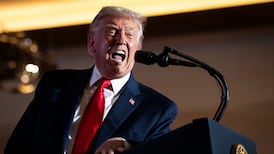After the most difficult month of the pandemic on the island to date – and a devastating one for the many families that have lost loved ones – January comes to an end with the epidemiological picture finally beginning to look more encouraging. There is a long way to go to bring the disease under control, but all the indicators suggest the lockdown is forcing case numbers down at a steady pace. That is beginning to reduce the flow of very sick patients into hospital and will, if the trend holds, ease pressure on a health system that has come under severe strain this month.
Those positive signs have intensified the focus on two critical issues: the vaccination programme and the Government's long-term Covid strategy. The pace of the vaccine rollout will largely be shaped by external forces, in particular the speed with which AstraZeneca can deliver its easy-to-store vaccine and the timeline of the European approval process for other promising candidates such as those of Novavax and Johnson & Johnson. The Government will be responsible for everything that happens once the vials reach the State, but until then it has frustratingly limited ability to shape events.
The larger Covid-19 strategy is clearly for it to determine, however. Debate this week has circled around “Zero Covid”, or the idea that the disease should be driven down as close as possible to zero through strict control measures. The goal would be to end all community transmission, thus allowing some sort of ordinary life to resume. In a blunt assessment of the proposal on Thursday, key members of the National Public Health Emergency Team (Nphet) dismissed it as risky and impractical.
There is far less between the two sides than the debate would suggest. Through the lockdown, increased restrictions on travel and limited quarantine, the State is trying to push the incidence of the virus as low as possible. It believes it is unrealistic to think cases can be eliminated and for society then to open up as normal because the State's porous border with Northern Ireland would create an environment in which the virus could thrive. And it says the cost of trying – the closure of schools for a further extended period, for example – would be high. The other side responds: well why not at least try?
The kernel of the issue is how far further the State should go in tightening restrictions. And on this, there are two things it could – and should – do. The first is to strengthen enforcement of existing rules, in particular on travel and, when it comes, quarantine. The second is to engage authorities in Belfast and London in serious discussions about real cooperation. Even if that cannot produce an impenetrable wall against the virus, it can contribute to a further forcing-down of the numbers over the coming weeks and months.










